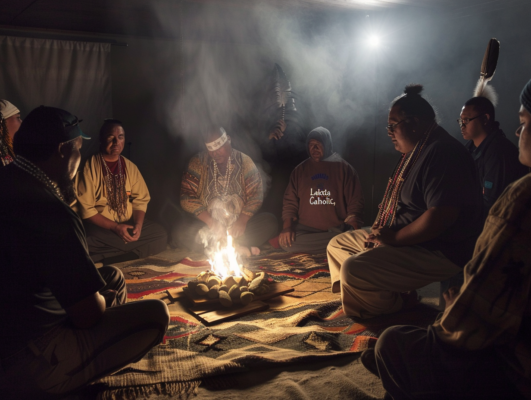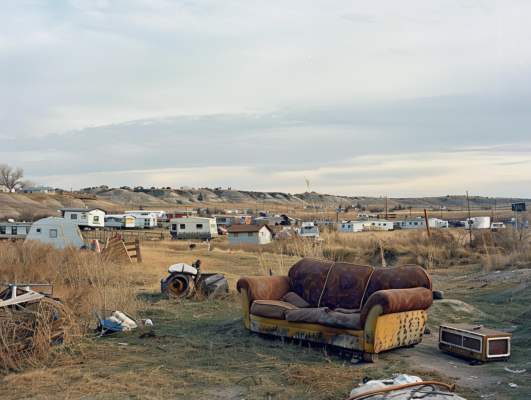Pine Ridge Reservation, home to the Oglala Lakota, is one of the poorest counties in America. The stark reality of life here is a mix of rich cultural heritage, profound spirituality, and significant socio-economic challenges.
A Community on the Edge
Visitors to Pine Ridge are often struck by the pervasive sense of hardship. Roger, a local historian and a prominent figure within the community, provides a glimpse into the daily struggles and the deep-rooted history of the Oglala Lakota people. Gunshots ring out almost every night, a grim reminder of the violence that shadows the reservation. The Mexican cartel has also infiltrated the community, exacerbating the issues of drug addiction and crime.
Preserving Traditions Amid Modern Struggles
Despite these challenges, the community remains deeply connected to its traditions. The sweat lodge, a sacred space for prayer and purification, stands as a testament to the enduring spiritual practices of the Lakota. Here, even individuals associated with urban gang culture find a moment of peace and unity, shedding their rivalries to pray together.
Roger, who identifies as a “Lakota Catholic,” bridges traditional practices with his work at a local Catholic Jesuit school. This blending of faiths illustrates the complex identity many in the community navigate, embracing both ancestral ways and the influences of Christianity.
The Impact of Historical Trauma
The historical trauma of events like the massacre at Wounded Knee still resonates deeply within the community. Many Lakota people suffer from this intergenerational trauma, which manifests in various socio-economic problems today. The reservation’s isolation—intentionally designed by the government—keeps the community impoverished as resources and money flow out of the reservation, leaving the residents to fend for themselves with limited support.
A Glimpse into Daily Life
Life on the reservation is a stark contrast to the outside world. Housing is scarce, and many homes are crowded, with multiple families living in small trailers. The Thunder Valley Housing Development, with its semicircular layout reminiscent of traditional tipi formations, offers a glimmer of hope. However, the misconception that the government provides free housing persists; in reality, residents often bear the financial burden themselves.
The reservation’s infrastructure reflects its hardships. The dialysis center is a stark indicator of the high prevalence of diabetes, a consequence of the carbohydrate-heavy government rations. Alcoholism remains rampant despite Pine Ridge being a dry reservation, with bootleggers continuing to supply illicit liquor.
A Rich Cultural Legacy
Amid these struggles, the cultural and spiritual life of the Lakota people thrives. The community actively engages in traditional ceremonies and language preservation, with immersion schools playing a crucial role in revitalizing the Lakota language. The sweat lodge ceremonies, where participants pray with sacred rocks, are a cornerstone of their spiritual practice, symbolizing a deep connection to their ancestors and the land.
Roger’s stories paint a vivid picture of Pine Ridge’s past and present. The reservation’s history is marked by resilience and a strong sense of identity, despite the external and internal conflicts that have shaped its journey. The enduring spirit of the Lakota people is evident in their continuous efforts to preserve their culture, support their community, and overcome the challenges that come their way.
Conclusion
The Pine Ridge Reservation is a place of profound contrasts—rich in culture and spirituality, yet burdened by economic hardship and historical trauma. The stories of individuals like Roger offer valuable insights into the resilience and strength of the Lakota people. Their efforts to maintain their traditions and support their community amidst significant challenges highlight the indomitable spirit that defines Pine Ridge. As outsiders, we are reminded of the importance of understanding and respecting the complexities of Native American life, recognizing both the beauty and the struggles that coexist in these communities.







